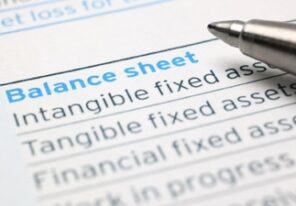Ruth King
Ruth King is a serial entrepreneur, having owned seven businesses in the past 30 years. Ruth has been instrumental in helping business owners understand and profitably use the information generated from the financial segment of their businesses. Recently, she was the instructor for ICE, the Inner City Entrepreneur program in conjunction with the Small Business Administration. Ruth has written many manuals and books, and she was the 2006 USA Best Books Winner for Entrepreneurship and a finalist for the Independent Publisher Awards (IPPY) for her first book, “The Ugly Truth About Small Business.” Her best-selling book “The Courage to be Profitable” was published in 2013.
Latest
6 Questions You Must Ask as a Business Person
Small business owners generally experience many highs and lows. Do you have what it takes to succeed? Your answers to the six questions below can help determine your chances for business success.
4 Critical Financial Activities for Business Survival and Growth
Every business has four areas that owners and managers must control to profitably survive and grow. Make sure you are tracking them and taking action when they are not trending the right way.
Readers Ask: Overhead vs. Cash?
The bottom of your P&L shows profit—not cash. Remember that profits are not cash. Only the interest payment for loans is covered in overhead. There are also some non-cash expenses such as depreciation in overhead.
Why Knowing Your Overhead Cost per Hour is Important
If your overhead is too high because of spending too much on extras and fancy offices, that can easily be resolved. However, if you’ve cut your overhead to the bone, then you must look other places.
Gross Margin Doesn’t Tell the Whole Story
Your financial report says that you’ve achieved a 35% gross margin on your latest project/job. Should you be happy? Maybe. Gross margin doesn’t tell the whole story.
Financial Statement Fruit Salad Is a Recipe for Disaster
You can’t make good decisions for your business without accurate financial statements. If someone is inputting the wrong information, or putting it in the wrong locations, then you’ll have financial statements which can’t be relied upon. You don’t need to know the intricacies of how each entry is made. You do need to know enough to question if the statements don’t appear to be right.
Protect Your Cash, Part 3
If you implement the policies that prevent the same person from handling all the cash and banking functions, plus review receivables, payables, and your financial statements regularly, you will have a better chance to catch anything questionable early on.
Protect Your Cash, Part 2
In this second of three parts, here are more easy procedures to implement so that you protect your hard earned cash. The person who signs the checks is not the same person who balances the checkbook.
Protect Your Cash, Part 1
There is no sense in doing the work if you’re not collecting the cash for the work you do. That, from a business standpoint, is one of the most important things to do. But once you get the cash in the door, you must make sure you protect that cash from employee theft and other mismanagement. There are some simple and very easy things that you should do to make sure that you protect your hard earned cash.
Profit Is Not Cash
Each month, your profit and loss statement tells you whether you earned a profit or had a loss. It does not tell you how much cash you have. You must turn your profits into cash by collecting your receivables and paying the expenses incurred to produce those revenues.
- « Previous
- 1
- 2










